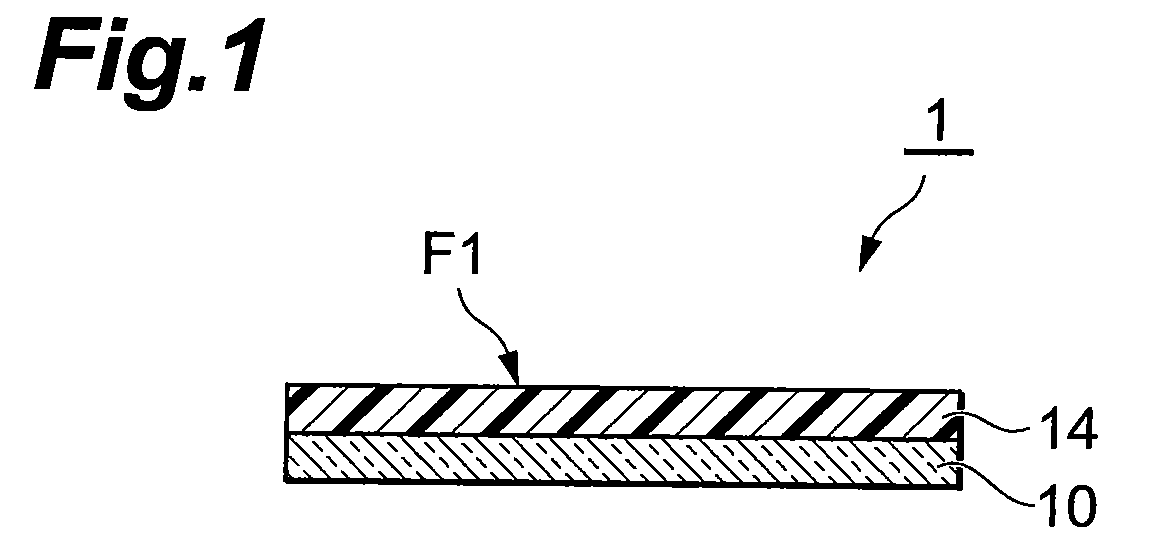Photosensitive resin composition, photosensitive element employing the same, method of forming resist pattern, and process for producing printed wiring board
a technology of photosensitive resin and resin composition, which is applied in the direction of photosensitive materials, photomechanical equipment, instruments, etc., can solve the problems of inability to obtain printed circuit boards free of interconnection defects in good yield, inability to clean the developing equipment at the same time, and inability to adequately reduce the amount of development sludge and scum. , to achieve the effect of low foaming and good reduction of the amount of development sludge and scum
- Summary
- Abstract
- Description
- Claims
- Application Information
AI Technical Summary
Benefits of technology
Problems solved by technology
Method used
Image
Examples
examples
[0092]The present invention will be specifically described by the following examples, but the present invention is not limited to these examples.
[0093]
[0094](Binder Polymer 1)
[0095]600 parts by mass of a mixed solution of methyl cellosolve and toluene (methyl cellosolve:toluene=3:2 (mass ratio), hereafter referred to as solution A-1) was introduced into a flask fitted with a stirrer, reflux condenser, thermometer, dropping funnel, and nitrogen inlet tube, and was heated to 85° C. while stirring and blowing in nitrogen. A solution (hereafter referred to as solution B-1) was also prepared by mixing methacrylic acid, methyl methacrylate, butyl acrylate and styrene in a mass ratio of 25:50:20:5, and 600 parts by mass of solution B-1 was added dropwise over 4 hours to solution A-1 heated to 85° C. After this addition, the temperature was maintained for 2 hours at 85° C. while stirring. In addition, a solution prepared by dissolving 1 part by mass of azobisisobutyronitrile in 100 parts by...
PUM
| Property | Measurement | Unit |
|---|---|---|
| photosensitive | aaaaa | aaaaa |
| frequencies | aaaaa | aaaaa |
| frequency | aaaaa | aaaaa |
Abstract
Description
Claims
Application Information
 Login to View More
Login to View More - R&D
- Intellectual Property
- Life Sciences
- Materials
- Tech Scout
- Unparalleled Data Quality
- Higher Quality Content
- 60% Fewer Hallucinations
Browse by: Latest US Patents, China's latest patents, Technical Efficacy Thesaurus, Application Domain, Technology Topic, Popular Technical Reports.
© 2025 PatSnap. All rights reserved.Legal|Privacy policy|Modern Slavery Act Transparency Statement|Sitemap|About US| Contact US: help@patsnap.com



